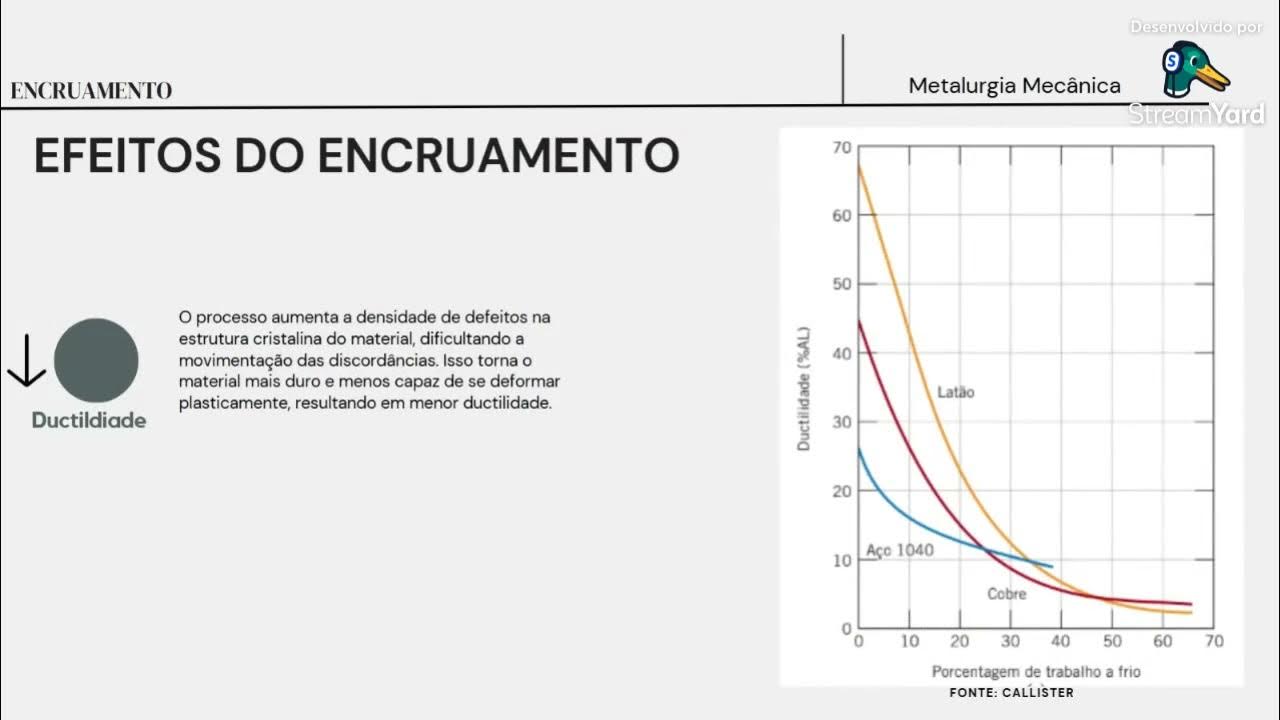Dislocation cannot end abruptly in a crystal: Dislocation nodes
Summary
TLDRThis script explains the behavior of dislocations in crystals, specifically focusing on how dislocation lines can terminate by intersecting with other dislocations, forming nodes. The speaker discusses the concept of slip planes and dislocation lines, noting that multiple dislocation lines can meet at a common point, creating a node. The explanation introduces Frank's rule, which states that the sum of the Burgers vectors of dislocations at a node must be zero. This rule holds true in both two-dimensional and three-dimensional dislocation networks, provided the correct vector convention is followed.
Takeaways
- 🔗 Dislocations cannot end abruptly inside crystals; they must either terminate on an external free surface, an internal grain boundary, or another dislocation.
- 🧩 A dislocation node is formed when multiple dislocations meet at a common point.
- 🌀 Multiple dislocation lines can divide a slip plane into several regions, each with its own slip characteristics.
- 💡 The meeting point of several dislocations is referred to as a node, where dislocation lines can end on other dislocations.
- 🔄 Slip regions are separated by dislocation lines, with different regions having differential slips.
- 📏 Burgers vectors represent the magnitude of slip in each region, corresponding to the dislocation lines.
- ⚖️ According to Frank's Rule, the sum of the Burgers vectors at a node must be zero, ensuring equilibrium in the system.
- 🔀 To apply Frank’s Rule, a consistent convention must be followed, where all line vectors either point out of or into the node.
- 🌐 Dislocation networks can exist in three dimensions, not just in planar configurations.
- 🧭 The validity of Frank’s Rule depends on following a consistent convention for the direction of the line vectors at the node.
Q & A
What are the possible ways a dislocation can end inside a crystal?
-A dislocation can end on an external free surface, an internal grain boundary, or it can end on other dislocations and form a node.
What is a dislocation node?
-A dislocation node is a point where multiple dislocation lines meet. At this junction, the dislocations form a node, and their respective Burgers vectors must satisfy a specific condition known as Frank's rule.
What is the significance of the slip and no slip regions?
-Slip and no slip regions indicate the areas where dislocation occurs and where it does not. A dislocation line separates these regions, with one side experiencing slip (dislocation movement) and the other side remaining unslipped.
Can more than one dislocation line exist on a slip plane?
-Yes, multiple dislocation lines can exist on a slip plane, dividing it into several regions. These lines can meet at a common point called a node.
What convention is followed when determining the Burgers vector at a node?
-The convention is to take all tangent vectors (t vectors) of the dislocation lines either pointing away from the node or all pointing into the node. The sum of the corresponding Burgers vectors at the node must equal zero according to Frank's rule.
What is Frank's rule in the context of dislocation nodes?
-Frank's rule states that the sum of the Burgers vectors at a dislocation node must equal zero, provided that the convention of t vectors (line vectors) is followed.
How can you intuitively understand the sum of Burgers vectors being zero?
-Starting from a no-slip region, as you cross various dislocation lines, you undergo different slips characterized by their respective Burgers vectors. By the time you return to the original no-slip region, the total slip must sum to zero, implying the sum of the Burgers vectors is zero.
What happens if you don't follow the convention for t vectors?
-If you take t vectors arbitrarily, the sum of the Burgers vectors at the node may not satisfy Frank's rule. The rule is only valid when all t vectors point either into or out of the node.
Can dislocation networks exist in three-dimensional space?
-Yes, dislocation networks in real crystals can be three-dimensional. A dislocation line does not have to lie in the same plane as the others but can extend out of the plane, while Frank's rule still applies.
Why is it important to follow the convention of t vectors at a node?
-Following the t vector convention ensures that Frank's rule, which states the sum of Burgers vectors at the node is zero, is satisfied. This convention is crucial for maintaining the integrity of dislocation behavior in crystals.
Outlines

Dieser Bereich ist nur für Premium-Benutzer verfügbar. Bitte führen Sie ein Upgrade durch, um auf diesen Abschnitt zuzugreifen.
Upgrade durchführenMindmap

Dieser Bereich ist nur für Premium-Benutzer verfügbar. Bitte führen Sie ein Upgrade durch, um auf diesen Abschnitt zuzugreifen.
Upgrade durchführenKeywords

Dieser Bereich ist nur für Premium-Benutzer verfügbar. Bitte führen Sie ein Upgrade durch, um auf diesen Abschnitt zuzugreifen.
Upgrade durchführenHighlights

Dieser Bereich ist nur für Premium-Benutzer verfügbar. Bitte führen Sie ein Upgrade durch, um auf diesen Abschnitt zuzugreifen.
Upgrade durchführenTranscripts

Dieser Bereich ist nur für Premium-Benutzer verfügbar. Bitte führen Sie ein Upgrade durch, um auf diesen Abschnitt zuzugreifen.
Upgrade durchführenWeitere ähnliche Videos ansehen
5.0 / 5 (0 votes)






